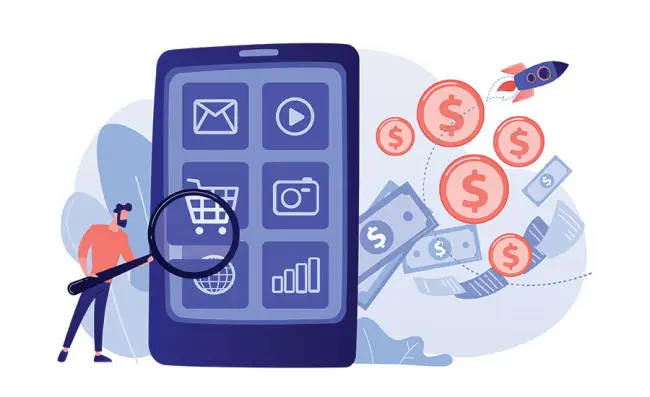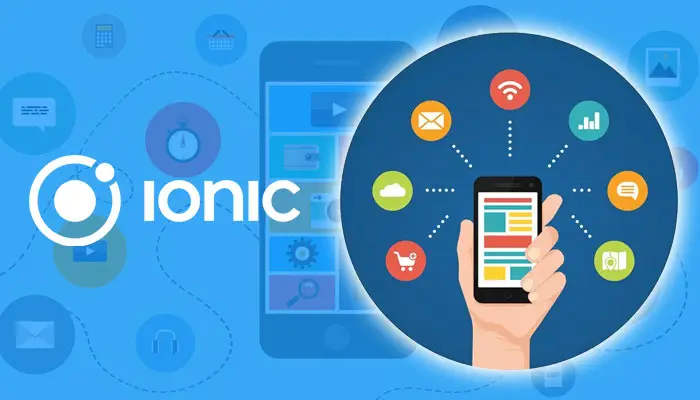
Mobile App Monetization Trends – How to Make Money with Your Apps
By, Amy S
- 4 Dec, 2023
- 523 Views
- 0 Comment
Now that your native or multi-platform app is ready for use, the question becomes one of dollars. How does one create revenue using a mobile app? There are many different options currently available to app producers and developers. I will try to cover the most popular choices here.
In-App Advertising
More and more app developers are choosing to use this model when it comes to their apps. The main reason is that most smartphone and tablet users prefer to download free apps and understand that by doing so, they will likely have to deal with some ads. There are many different options, and the list is constantly growing: from classic “banner ads” and videos to rewarded ads (usually found in games), app lists, and now “playable ads” (where users can actually try an advertiser game or app without downloading it or switching away from your app).
The main thing to consider, beyond which style of ads will bring you the most revenue, is how it will affect your user’s experience. If ads appear too frequently or are disruptive to the use of your app, users will be quick to move on to another app that gives them a more hassle-free experience.
There are several mobile advertising networks that have been developed over the years to help with the process of displaying ads within your app. The most popular is Google’s Ad Mob, and Apple created their own iAds network for their devices (which will be shutting down later this year). In the near future, we will publish a post to focus on some of the different mobile advertising networks out there. Paid Apps
This is probably the most straightforward option. To download your app from an app store, the user must purchase it. This model is becoming less popular, as many smartphone and tablet users prefer their apps to be free (as stated above) unless your app provides a lot of data (fitness trackers, GPS navigation apps, etc.) to your users. While it can be a clear strategy to counter development costs, remember that this would be a one-time purchase for a product that will likely require some amount of support and upkeep. So your app’s purchase price may need to be high enough to cover some of these costs as well, unless used in combination with another strategy.
Companies like App Annie can be used to find useful data and analytics for mobile apps and app stores (often for free, depending on the level of data you are looking for). This can be useful for checking the stats of similar apps and can help you set a competitive price for your own app.
Also, be aware that Apple and Google each take a 30% per transaction fee for any purchases made through their respective app stores, and a dissatisfied customer who requires a refund will often mean a loss of that transaction cost.
In-App Purchases
Next to the in-app advertising model, a free app with some available in-app purchases is the second most prevalent app monetization strategy. This purchase can add new features to the app (i.e.: adding map regions to a GPS navigation app), remove advertising (common in apps that use advertising to monetize their apps), or add “virtual currency” (common in many free games). Again, as in the case of paid apps, the app store will take a percentage (30% in the case of Apple or Google) of your purchase price as a transaction fee.
Freemium Apps
Although this term can also be used to describe some of the types of free apps listed above (ones that rely on in-app ads, purchases, or a combination of both for monetization) another type of freemium app often involves two versions of the same app: a “lite” version that enables users to test your app for free, and a full-featured “pro” version as a paid app. Though there are some advantages to using this model, its use is diminishing, as this technique can often be accomplished using in-app purchases and a single version of your app. Unless a full version of your app would be a considerably larger download than a potential “lite” version.
Subscriptions
As in the paid app model, a continuous subscription fee only works well for apps that provide a lot of content. GPS navigation apps, fitness trackers, and apps like Netflix or Texture (by Next Issue, an e-magazine subscription app) use this model well, by providing an ongoing service that their customers often can’t live without once they start using it. This model can ensure that a company’s operating costs are continually covered, much more than a single per-user purchase can. Remember though, if this subscription is made through the app (as opposed to services like Netflix that are not limited to smartphones and tablets), the 30% per-transaction fee will still apply.
There are a few other revenue models that are worth mentioning. As opposed to selling advertising space in their apps, some apps can sell their data directly to advertising and data analytics companies. However, for this to work, your app must already be popular enough to provide companies with a large pool of data. Also, care must be taken, as your customers will be less than thrilled that their information is being sold off. Options such as sponsorship and merchandizing, will also only work with games and apps that are already quite popular.
Digital Fractal Technologies is an Edmonton, Alberta-based development company that focuses on data-driven mobile applications. We develop both cross-platform apps as well as native mobile applications. For a free consultation, please contact us.
Ready to discuss your project idea?
Recent Posts
- Edmonton Developers: Leading Alberta’s Tech Innovation Revolution
- Cybersecurity Consulting: Essential Services for Modern Businesses in 2025
- Hire Android App Developer
- The Pros and Cons of Moving to Blockchain Technology: A Deep Dive into Privacy, Use Cases, and Adoption
- AI iPhone Apps: The Complete Development Guide for iOS AI Applications in 2025
Category
- Android (12)
- Artificial Intelligence (44)
- Blockchain (8)
- Cloud Solutions (1)
- Cyber Security (3)
- Cybersecurity (8)
- Digital Transformation (44)
- Industry News (13)
- Infographics (10)
- iOS (4)
- Mobile App Development (93)
- Software (4)
- Uncategorized (4)
- Web development (13)
- Workflow Automation (3)
All Tag
Archives
- August 2025
- July 2025
- June 2025
- May 2025
- April 2025
- March 2025
- February 2025
- January 2025
- October 2024
- September 2024
- July 2024
- June 2024
- May 2024
- April 2024
- February 2024
- January 2024
- December 2023
- November 2023
- October 2023
- September 2023
- July 2023
- June 2023
- May 2023
- March 2023
- December 2022
- November 2022
- October 2022
- April 2022
- March 2021
- February 2021
- January 2021
- December 2020
- November 2020
- October 2020
- September 2020
- August 2020
- July 2020
- June 2020

